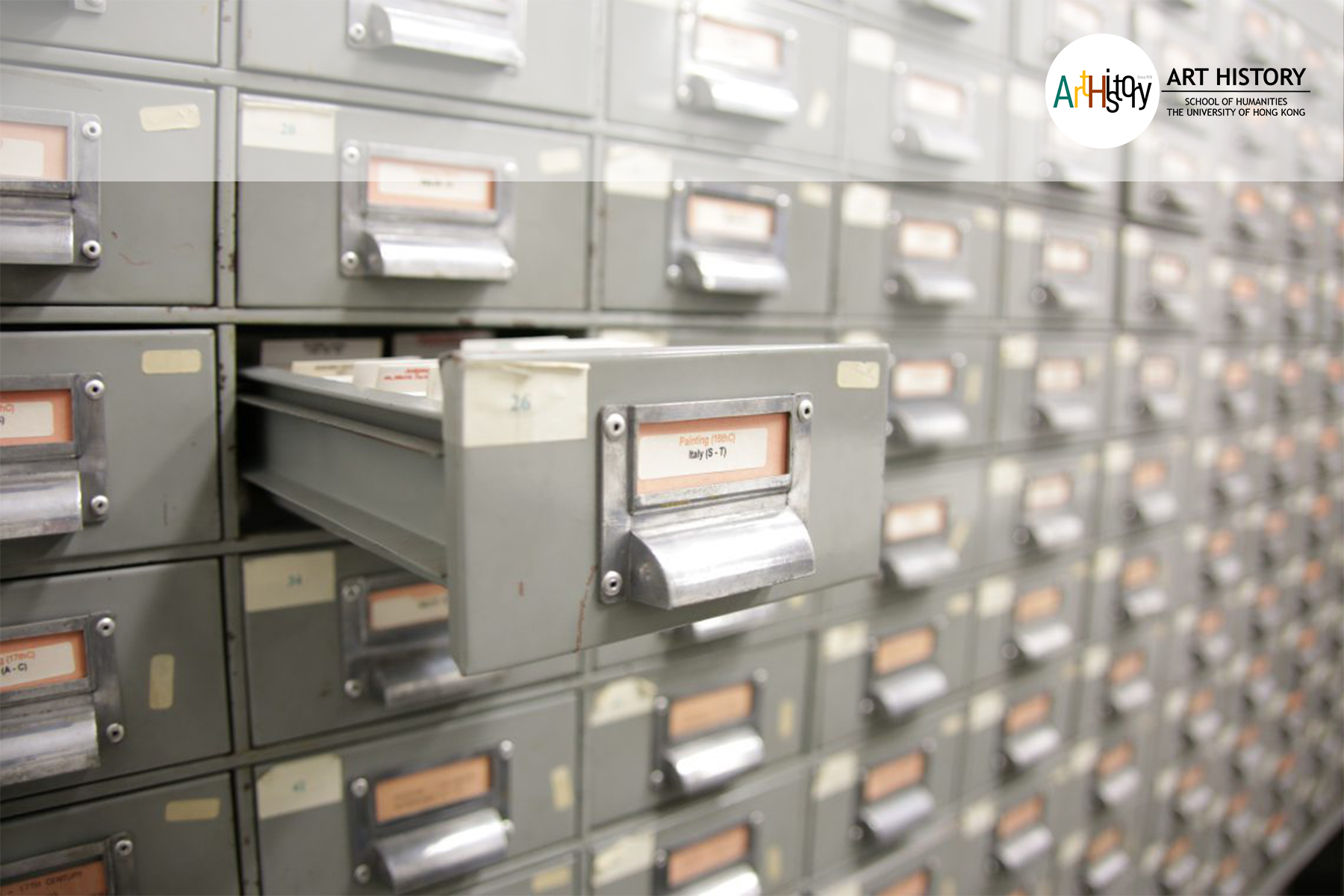In a dark classroom, you hear the sound of the slide machine, and your gaze follows the gently dancing dust along the projector’s beam of light… memories of seeing slide projections in class are still vivid to a lot of art historians trained before the revolutionary use of powerpoints.
Slides were an asset of a department like Fine Arts, when visuals were its primary focus of studies. Supporting staff like the slide librarian, the technician, and the demonstrator all used to help professors prepare these colourful visual materials for teaching. Therefore, the Department has its own Slide Library, with its collection of over 180,000 slides.

“When the slides changed, you had a sensation that the room was holding its breath, waiting for the next slide, for another masterpiece to appear. You don’t get that clicking sound with a digital projector… After taking that class I went to Europe and saw the masterpieces in person. The first thing that came to mind was sitting in Dr Muir’s classroom in the Main Building.” — Khadinn Khan
“It was really difficult using the slide machine… Sometimes it got blocked and it would take a lot of time to fix it. And one time the slides burned. We panicked and didn’t know what to do. The Technicians and support staff helped us out – they were very important to us and more like family members.” — Connie Lam


Early Fine Arts students did not have the privilege to enjoy easy access of high-resolution images that students nowadays almost take for granted. To review lecture materials, instead of conducting a google search, or downloading ppt files with smartphones, students back then would have to rely on the precious slides albums.
Changes took place with Professor Richard Stanley-Bakers’ visionary project of FAIVA, Fine Arts Interactive Visual Archive. He supported the digitization of slides and the building of an intranet visual database in early 1990s.


However, owning a personal computer with stable internet access was not common in 1990s or even early 2000s. Students would use desktops in the Slide Library (renamed as the Fine Arts Resource Centre in 2002), beginning to rely on this new in-house system for revision. Stepping into 2010s, the Department’s slide collection and FAIVA faced greater challenges. When Dr. Carolyn Muir retired in 2013 and Professor David Clarke in 2017, with no other teaching faculty using physical slides in class anymore, the 180,000+ slides finally came to their retirement as well. FAIVA had to go through several make-overs and structural updates in order to cater for users who have grown increasingly comfortable with technology.
At this moment in time, FAIVA is still up and running. There are new directions to be tested out in the near future. Hopefully, the latest technology is going to help make the best out of these existing records and allow more people to recognize their value before another visionary project takes off!
[The writing was first published on 12 August 2019, in celebration of the Department’s 40th anniversary]



Find us on…